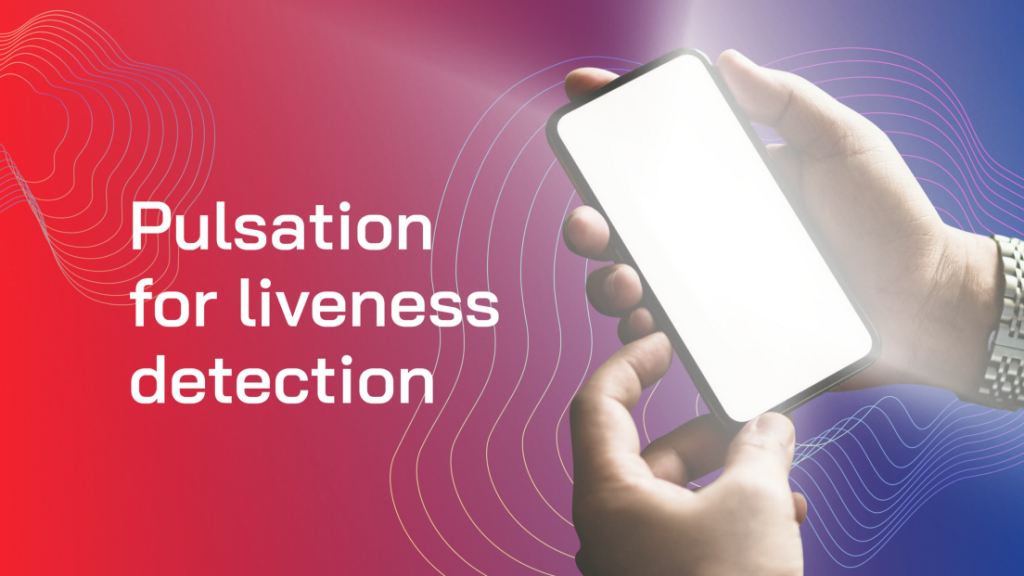Pulsation for liveness detection

While attackers invent new ways to trick defense systems, on the other side we roll with their punches. There are many kinds of spoofing attacks but have you ever heard that your skin can reduce the probability of a successful attack to zero? This article explains how and why the skin can act as the liveness marker.
What is pulsation in terms of biometrics?
First of all, let’s define the term “pulsation”. By using this word we do not refer to heart rate and ways to track it. This authentication method would not withstand the slightest criticism.
The term “pulsation” designates the human skin’s ability to reflect light. When there is a constant source of light, the skin reflects it evenly. But if the light flashes and goes out then, this spark is reflected by the skin also as a flash.
Repulses obtained differ depending on the skin’s individual features and the flash color. This is because the skin is penetrated by the thinnest vessels filled with blood. The blood of a living person pulsates due to a heartbeat. It is this pulsation of blood that allows the reflection of even slightest changes in skin color highlighted by a flash. Humans can’t see these changes, but a camera will pick it up.
Here is how it works:
- Svort analyzes some face parameters and then highlights an object on a user’s face. Any part of the face (the nose, eyebrows, eye, cheeks, etc.) can act as an object.
- The parameters obtained during the flash outbreak are compared with the initial parameters obtained before the flash.
- At the same time camera detects whether the image is three-dimensional.
Three-dimensional volume and relevant pulsation parameters indicate that the person in front of the camera is alive. That is how Svort performs liveness detection through pulsation.
Why is it safe?
The method is combined and consists of 2 parts: obtaining and comparing parameters before and during a flash and detection of three-dimensional volume. But there are also trained neural networks that enhance security.
For granting access, it is not enough just to obtain and compare face parameters. It is also important to reflect the individual characteristics of every user’s skin, its texture, and reactions to flashing light. This is possible due to neural networks trained to catch patterns of how users’ skin reacts on pulsation.
Altogether these components allow Svort to accurately detect liveliness. It sounds simple but actually we’ve done a tremendous amount of work to make the process of liveness detection through pulsation precise and smooth. The matter at hand is the synthesizing and collecting the huge dataset needed for neural networks deep learning. But for enthusiasts like us, nothing is impossible so we coped, and now everything works as it was expected to work.
If it looks like what you’ve been looking for, drop us a line on [email protected], and let’s stay in touch: LinkedIn, Facebook, Twitter, Medium. We are ready to discuss the technology and answer the questions.